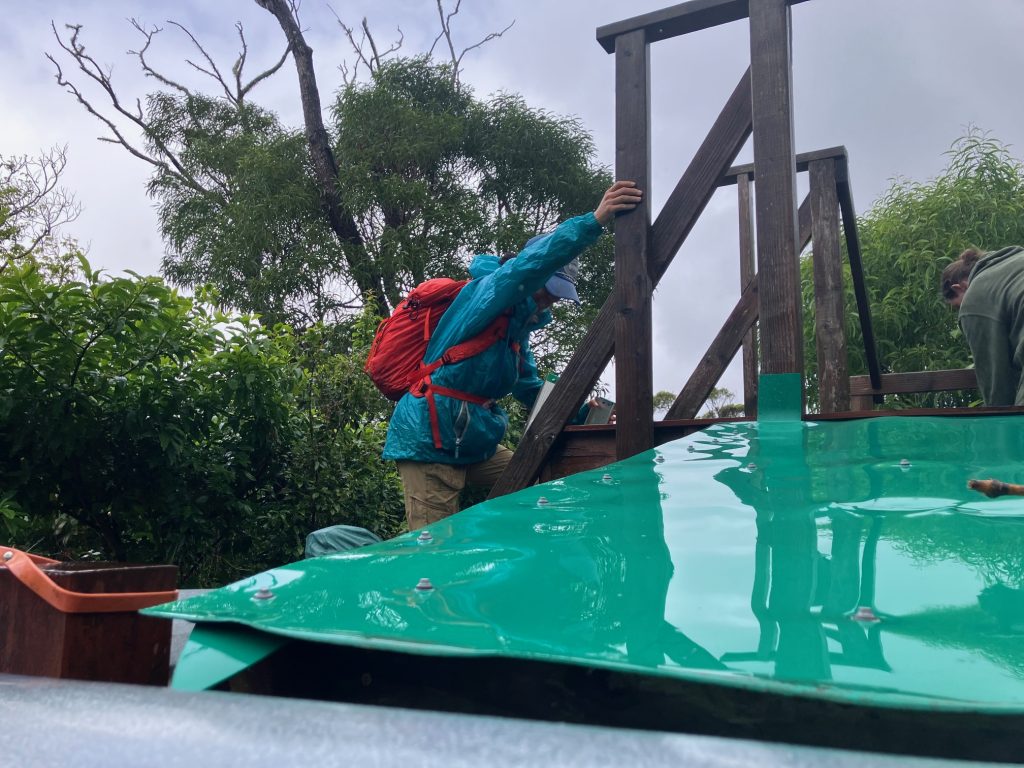Rare Hawaiian snail reintroduced into Koʻolau Mountains on Oʻahu

After more than 33 years in captivity, a rare Hawaiian snail species known as Achatinella fuscobasis was released recently into the Honolulu Watershed Forest Reserve of the Ko‘olau Mountains on Oʻahu.
“Our snails are true public-trust jewels of nature and culture,” said David Sischo, PhD., Department of Land and Natural Resources Snail Extinction Prevention Program coordinator. “They are drivers of ecosystem function, collectively cleaning and cycling nutrients in the forest. They have deep ties to Hawaiian tradition with revered significance in chant, hula and lei making. They are also just really cute.“
The snails’ new home in the Ko‘olau Mountains is a quarter-acre, fenced exclosure, built to keep out unwanted animals. It is a far cry from the climate-controlled conditions of the snail lab which, until last week, was all they had known. Trade winds, misty rains, cooling cloud cover and warm sun are things that the snails will learn to adapt to, going forward. What won’t require adjustment is the same predator-free environment they are familiar with and that is what the exclosure provides.
Five-foot-tall polyethylene walls fixed with angled flanges, copper wire mesh and a hood barrier exclude rats, Jackson’s chameleons and the cannibalistic rosy wolf snail, the key introduced predators of Hawai‘i’s native snails and their main cause of extinction.
The habitat inside took roughly five years of painstaking work to prepare. The snail extinction prevention team and an army of partner and community volunteers spent approximately 600 hours searching for and removing predators from within its walls. Countless hours were also spent on hands and knees clearing weeds and other invasive plants and restoring the area with native species. Recovery of these Hawaiian snails, from captive rearing to reintroduction in the forest, was truly a collaborative process with care and aloha woven throughout.
“Our immediate objective was to secure the species from extinction by getting their numbers up and having both captive and wild colonies,” Sischo said. “Long-term, we would like to see thriving colonies back in the wild where they belong.”
Another group of Achatinella fuscobasis is scheduled for release next February.
For a reintroduction ceremony, staff from the DLNR Snail Extinction Prevention Program were joined by partners from the US Fish and Wildlife Service, the University of Hawai‘i at Mānoa and the DLNR Division of Forestry and Wildlife. To open the proceedings, Sam ʻOhu Gon led an oli for the protection and joyous return of the species to the wild.
Since 1991, the species had likely become extinct on the Hawaiian landscape. The last 11 individuals were collected that year from the only known populations on Oʻahu by UH researcher Michael Hadfield, PhD. If not for the actions and foresight of Hadfield and other biologists to bring these snails into captivity, they would have disappeared forever.
Today, the Hawaiian snail numbers have rebounded to more than 1,000 individuals in captivity at the Snail Extinction Prevention lab in Pearl City and scientists are optimistic about their future.
Bishop Museum and the Honolulu Zoo will captively rear Achatinella fuscobasis at their new snail labs so people will get a chance to see the species up close.





















